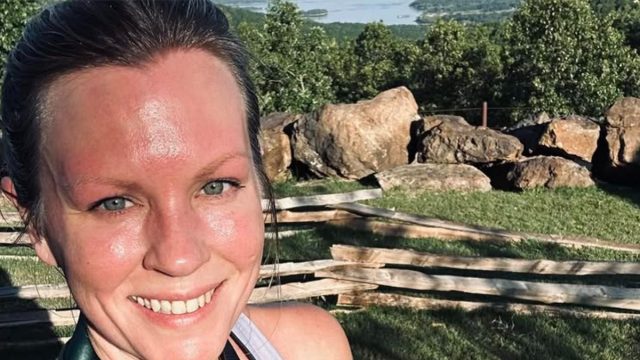Coach Transformed Body at 40 by Ditching CrossFit and Running and Doing This Instead

Are you training hard and taking extreme measures with your diet but can't seem to lose weight? You might need to tone things down, one expert says. Kathe Martin is a certified nutrition coach who helps women transform their bodies via nutrition and exercise. In a new post, she shares her dramatic before-and-after photo, revealing how she smartened up her approach to losing weight. "Transformation Over 40—But It Didn't Happen Overnight," she writes in the caption, revealing the simple tactics she used to lose weight. "The key? Dialing in my nutrition and training smarter, not harder," she writes. Here is what she did:
There Is No Quick Fix
"This isn't a 6-week challenge or a quick-fix diet. This is years of consistency, trial and error, setbacks, and breakthroughs. Progress wasn't linear—I had my ups and downs, moments of doubt, and times when I felt like I was doing everything right but still wasn't seeing the results I wanted," she writes.
She Dialed in Her Nutrition
"The real shift happened when I finally dialed in my nutrition. No more extreme dieting, no more chasing quick fixes—just fueling my body in a way that actually worked for me," she continued.
She Changed Her Approach to Fitness, Running Less
She also had to change her approach to fitness. "And as much as I love running, I had to face a hard truth: more wasn't always better. I used to run five days a week, thinking that was the key to getting lean, but in reality, I needed more balance," she writes.
Now She Runs Twice a Week
She now balanced cardio with strength. "Now, I still run (because I love it and always will! 🏃♀️), but just twice a week (only during race season), while making lifting the priority."
She Lifts Weights and Does Low-Intensity Workout
She also started lifting weights. "Strength training and low intensity gave me the results I had been chasing for years," she reveals.
She Used to Do CrossFit
"I was never this strong or this lean in all my years of CrossFit. I worked hard, but I was constantly under-fueling, overdoing cardio, and stuck in the mindset that more was better. Turns out, smarter was better," she admits.
It Takes Time and Commitment
"So if you're feeling stuck, frustrated, or like your progress isn't happening fast enough—just know, this takes TIME. But if you stay consistent, work smarter (not harder), and trust the process… the results WILL come." And if you enjoyed this article, take advantage of these 15 Quick Ways to Lose Body Fat Percentage in a Week.




